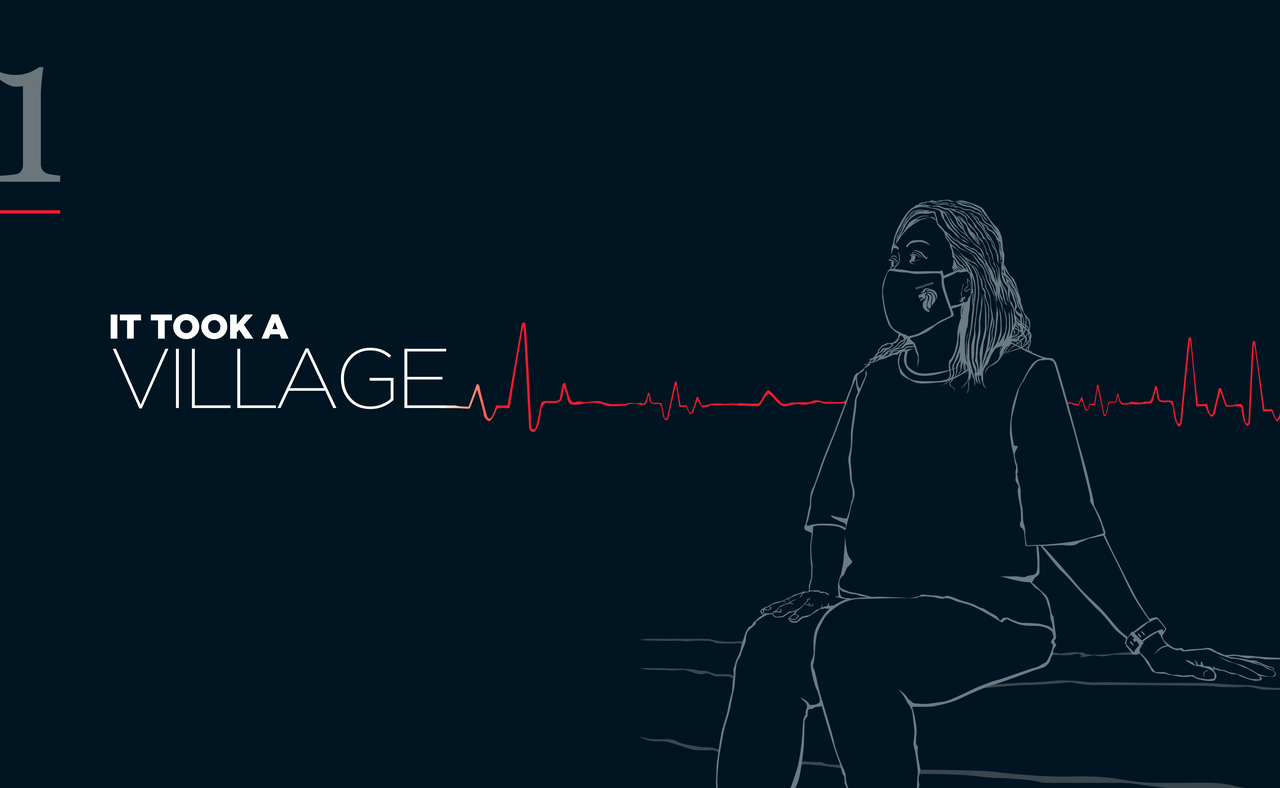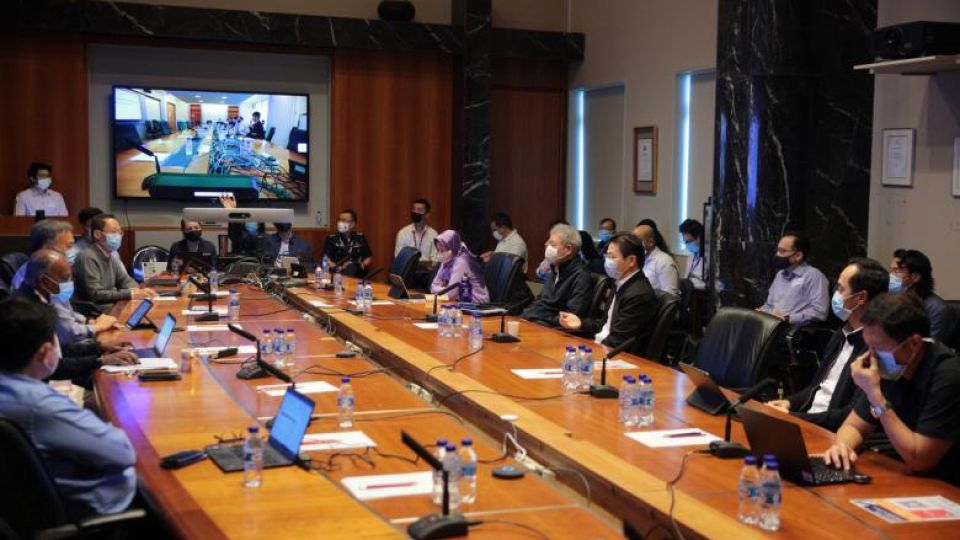January 20, 2022
SINGAPORE – A new book released on Thursday (Jan 20) has chronicled the first two years of Singapore’s fight against the Covid-19 pandemic, through the telling of pivotal behind-the-scenes moments and exclusive interviews.
In This Together: Singapore’s Covid-19 Story contains 13 chapters written by journalists from The Straits Times newsroom who have been in the thick of covering the crisis. It is edited by executive editor Sumiko Tan.
The writers spoke to more than 300 people including Prime Minister Lee Hsien Loong, President Halimah Yacob, Cabinet ministers, government officials, corporate leaders, front-line workers, volunteers, foreign workers and survivors of the disease.
The 352-page book is divided into two parts: Saving lives, where the efforts of the Government, healthcare sector and scientific community are documented; and saving livelihoods, which expounds on the parallel economic battle to preserve jobs, businesses and Singapore’s hub status.
The opening chapter, titled It Took A Village, illustrates how 24 healthcare workers – including doctors, nurses, therapists and housekeepers – worked in tandem to help save the life of retired tutor Irene Tan, 67, who had a severe Covid-19 infection in March 2020.
The next chapter, Inside The War Room, provides a detailed look at how Singapore’s leaders – from PM Lee to the multi-ministry task force and the Civil Service’s Homefront Crisis Executive Group – tackled the most critical test faced by the city-state in over a generation.
Other highlights include the inside stories of how Singapore procured masks amid frenzied global demand in the early days, the bets and risks involved in purchasing vaccines, and the concerted push by hospitals to step up capabilities while their overwhelmed staff endured struggles of their own.
The book, which is published by Straits Times Press, also examines efforts to stamp out the virus in dormitories occupied by more than 300,000 foreign workers, who made up 19 out of 20 infections in 2020.
Interspersed between chapters are profiles of pandemic front-liners, survivors and people who died from the virus.
Putting this human touch to Singapore’s entire undertaking against Covid-19 was a primary reason cited by Ms Tan in coming up with the book, which comes almost exactly two years after Singapore’s first Covid-19 case was detected on Jan 23, 2020.
She said the book aims to pay tribute to front-liners – healthcare workers, public servants, those in essential services – whom people often take for granted.
And while journalism did not entail front-line activities such as swabbing or managing crowds, Ms Tan said that what journalists could do was chronicle for future generations the events of the day, so this period of history would not be forgotten.
“If someone were to read this 20 years down the road, they would understand what the first years of the pandemic were like, how Singaporeans felt, and why we did what we did,” she added.
Ms Tan said that from the onset, the team was clear that In This Together was going to be a chronicle of Singapore’s fight, rather than an assessment.
One major challenge for the project, which started in August 2020, was the unfolding realisation that the pandemic “was not going to go away any time soon”, she noted. Publication – originally scheduled for the middle of 2021 – was delayed thrice and stories had to be updated each time.
“The delay allowed us to tell a fuller story,” she said. But a decision had to be made on where to end the book, and the new Omicron variant provided that milestone.

The opening chapter, titled It Took A Village, illustrates how 24 healthcare workers operated in tandem to help save the life of retired tutor Irene Tan. ST PHOTO: LOCK HONG LIANG
Case numbers are rising around the world but severe infections and hospitalisations are not, and some scientists believe this could suggest the coming end of the pandemic.
In an introduction to the book, Straits Times editor Warren Fernandez, who is also editor-in-chief of SPH Media Trust’s English, Malay and Tamil Media Group, wrote: “The book is not meant to be triumphalist or self-laudatory, but an honest record of the most severe test Singapore has faced in over a generation, and which will continue for some time yet as the crisis is far from over.”
Straits Times news editor Karamjit Kaur, who co-wrote a chapter on aviation, said the book was a tough project as it had to take in the morphing virus and Singapore’s changing responses.
Associate news editor Chang Ai-Lien, who co-wrote a chapter on hospitals, added: “Work on the book shadowed the trajectory of the virus, with its numerous twists and turns. The story is far from over.”
Ms Kaur and Ms Chang helm the newsroom’s own task force on Covid-19 coverage.
Health correspondent Timothy Goh, who wrote several segments including Singapore’s hunt for masks, said working on the book brought home to him how the pandemic has affected everyone – young, old, rich, poor, minister, migrant worker.
“I also witnessed a very human and personal side to the officials we see in the media,” he said. “Seeing the tiredness in their faces and hearing about the various doubts that were kept private till now reminded me that regardless of our station in life, for the past two years, we’ve also just been human beings trying to figure out a way to get through this, together.”
The book was supported by the Ministry of Communications and Information in the form of book purchases. The ministry also helped to arrange some of the interviews, but left the shape of the book and the telling of the stories to the writing team.
Where to buy the book

ST PHOTO: STEPHANIE YEOW
In This Together: Singapore’s Covid-19 Story retails for $28 (with GST) at major bookstores.
It is also available online at the Straits Times Press website.


